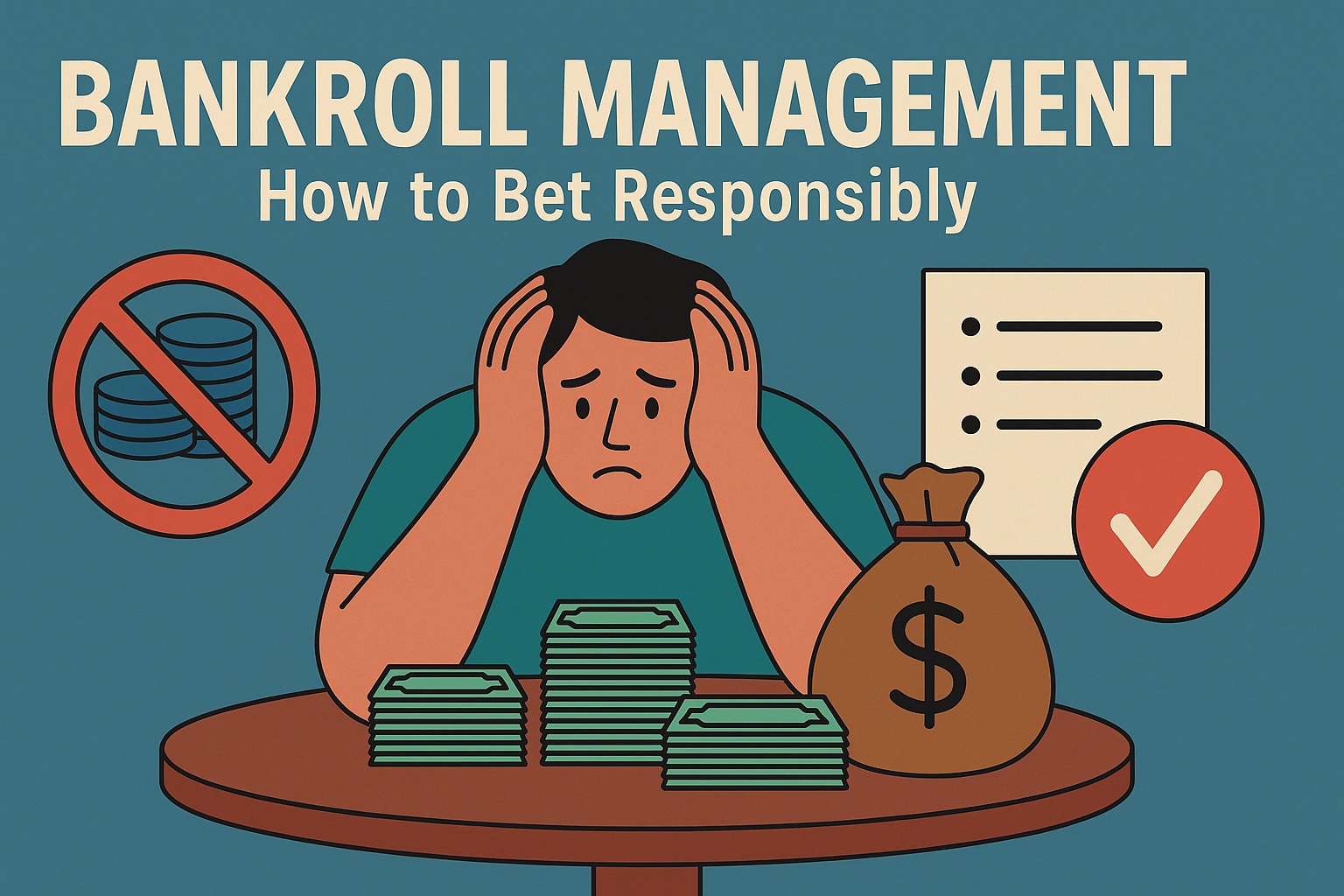Bankroll Management: How to Bet Responsibly is the single most important principle for every bettor who wants to avoid losses and maximize profits over time. Whether you’re wagering on NFL spreads or daily MLB props, understanding how to manage your funds is key to long-term success in sports betting.
Why Bankroll Management Matters in Sports Betting
Many bettors lose not because they pick bad teams, but because they stake too much on any one game. Bankroll management protects your funds by creating a structure: how much you bet, how often, and how to recover from downswings. Without a plan, it’s easy to chase losses, over-bet during hot streaks, or run out of money entirely after a few bad beats.
Professional bettors treat their bankroll like a business budget. They assign risk percentages, track every wager, and never chase emotion. That’s the difference between gambling for fun and betting like a pro.
“Discipline beats emotion. Betting without bankroll rules is like playing poker blindfolded.” — Marcus Trent, professional handicapper
- Risk control: Limits how much you can lose in a single day or week.
- Consistency: Keeps your betting stable regardless of winning or losing streaks.
- Longevity: Helps you survive variance and unpredictable outcomes.
- Data tracking: Lets you analyze performance and adjust strategies.
- Stress reduction: Removes impulse and keeps decisions rational.
Popular Bankroll Strategies Explained
There’s no one-size-fits-all bankroll strategy, but the best bettors follow a consistent system. Below are four proven approaches to bankroll management, each with unique risk profiles and practical use cases:
| Strategy | Description | Best For |
|---|---|---|
| Flat Betting | Wager the same fixed amount (e.g., 1–2% of bankroll) on every bet. | Beginners, risk-averse bettors |
| Percentage System | Wager a consistent percentage of your current bankroll. | Balanced risk and scalability |
| Kelly Criterion | Advanced method that adjusts bet size based on perceived edge and odds. | Experienced bettors with data models |
| Stop-Loss Limit | Pre-determined amount you can lose in a day/week before stopping. | Emotional discipline and damage control |
Each strategy has pros and cons. Flat betting is safest for consistent results, while the Kelly Criterion offers maximum theoretical value if you can quantify your edge. The key is picking a method you’ll follow—especially when emotions run high.
Daily, Weekly, and Monthly Limits
Responsible betting starts with setting personal limits. Here’s how to apply them:
- Daily Limit: Never risk more than 5% of your total bankroll in one day.
- Weekly Cap: Set a loss ceiling (e.g., 10%) to prevent compounding bad streaks.
- Monthly Review: Track bets, results, and emotional decisions every 30 days.
- Withdraw Wins: Pull out profits when your bankroll grows 25%+ to secure gains.
- Use Betting Logs: Track wager size, type, result, and reason for bet.
Common Bankroll Mistakes to Avoid
- Chasing losses: Increasing bet size after a losing streak is a fast track to emptying your bankroll.
- Over-betting on “locks”: No outcome is guaranteed. Risking too much on one game breaks discipline.
- No staking plan: Betting random amounts leads to volatility and emotional decisions.
- Ignoring odds value: Always evaluate if the price offers positive expected value—not just the matchup.
- Betting too often: Quantity dilutes quality. Focus on high-confidence opportunities.
Signs You’re Betting Beyond Your Means
Responsible bettors check in with themselves regularly. Here are some red flags that signal your betting habits may be crossing the line:
- You’re chasing losses or increasing stake size without logic.
- You feel anxiety, guilt, or pressure after betting sessions.
- You’re borrowing or using funds outside your entertainment budget.
- Your bets interrupt work, sleep, or relationships.
- You don’t track your results or avoid reviewing them altogether.
“When bankroll management breaks down, emotion takes over. That’s when smart bettors lose like amateurs.” — Ava Grant, sports psychology advisor
Awareness is key. Spotting these behaviors early allows you to reset your betting habits, rebuild structure, and restore control over your financial and mental well-being.
FAQs
- What is bankroll management in sports betting?
It’s the practice of controlling how much you wager, how often, and how you allocate funds to stay within budget and reduce risk. - How much of my bankroll should I bet per game?
Most experts recommend 1–3% per wager. Flat betting helps maintain long-term control and limits emotional swings. - Can I use bankroll strategies for parlays and live bets?
Yes, but high-variance bets like parlays should be limited to smaller stake sizes within your overall plan. - Is the Kelly Criterion safe for beginners?
No. It requires accurate probability assessment. Beginners are better off using flat or percentage systems. - Should I keep separate bankrolls for different sports?
Yes. If you bet on multiple sports, separate bankrolls help you track performance and apply sport-specific limits. - What’s the best way to track my bets?
Use spreadsheets or betting apps that log each wager’s amount, result, odds, and reasoning. Weekly reviews build discipline.
Conclusion
Bankroll Management: How to Bet Responsibly isn’t just good advice—it’s the foundation of successful sports betting. No matter your level of experience, setting rules and limits for your betting budget is critical for avoiding financial stress and staying in the game long-term.
The best bettors aren’t the ones who win every week—they’re the ones who survive variance, stick to their system, and walk away when it’s time. Whether you’re just starting out or refining your strategy, applying smart bankroll management separates gamblers from professionals.
Ready to take control of your betting habits? Start today by defining your bankroll, setting daily limits, and tracking every wager. Discipline now means freedom later.





